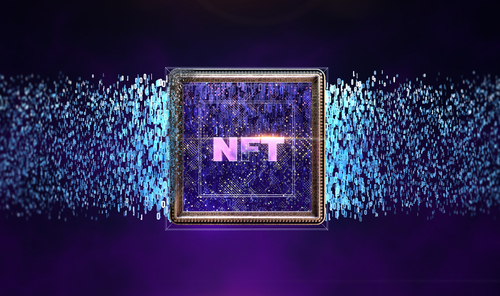 With non-fungible tokens (NFTs) now moving into the mainstream, Gareth Irvine, digital & sustainable business director with Oliver, looks at how brands are dipping their toes in the digital waters.
With non-fungible tokens (NFTs) now moving into the mainstream, Gareth Irvine, digital & sustainable business director with Oliver, looks at how brands are dipping their toes in the digital waters.
The NFT.
It’s just what we all need, another acronym in the marketing narrative. You just can’t beat a good old TLA. 2021 may be remembered for the short-term survival of the “3rd party cookie”, the launch of “spark ads” or the coming of age of branded content marketing virtual events. But potentially the true breakthrough global marketing opportunity is that of the NFT. The Non-Fungible Token is simply a unique one-of-a-kind digital (and marketing) asset.
The sceptic screams, “not another crypto fad”. However, with year-on-year NFT sales increase of 18,247%, eclipsing $2.5 billion for the first half of 2021, it could be suggested that NFTs are already mainstream, and the point of no return may have been passed. Like everything with big numbers it’s all relative. Total crypto trading volumes in June alone were $5.9 trillion.
Unlike crypto currencies, NFTs are a distinct type of digital asset class. Just like the tangible art hanging on walls worldwide, NFTs can be purchased exclusively as an investment but equally most people purchase art that they appreciate and love to look at, even if it is non-tangible digital art.
Based on social media observations the ownership bragging rights are perhaps more of a motivation for some recent NFT purchases. The new owner of the first ever tweet, a Malaysian based businessman, paid Jake Dorsey $2.9m for the NFT and compared the purchase to buying a Mona Lisa painting. Dorsey immediately donated to proceeds to charity.

But what have NFTs got to do with marketing and advertising? Simply, the trend of brand experimentation with NFT creation and omnichannel positioning is only starting. Coke, with a history of “collectables”, has entered the metaverse this summer with its NFT debut in the intersection of crypto and culture. Interestingly Coke is illustrating the power of the NFT by including a sound visualizer as part of the NFT, including classic Coke sounds such as a bottle opening, and a drink being poured over ice.
The evolution of the power of the brand in the art world is no better illustrated than by Campbells Soup. Andy Warhol’s Campbell Soup can art was first painted in 1961, with 32 canvases then created to celebrate the 32 flavour varieties of the brand. Interestingly they were not commissioned by the brand but rather evolved as a result of Warhol’s personal love of Campbells soup. Warhol sold all 32 originals as a collection for a total of $1000 in 1962. In 2006 a single canvas from the original Campbells soup series sold for $11.6m.
The Warhol Foundation hadn’t released any new artwork since Warhol’s passing in 1987 until May of this year when 5 digital pieces, created by Warhol on an Amiga1000 PC in 1985, were minted as NFTs. The first was sold for $870,000 on May 28th 2021. The provenance of these pieces results in many considering Warhol to be the first commercial artist to have experimented with digital art.
Campbells Soup then jumped on the NFT trend, seeking to capitalise on their artistic Warhol heritage and announced an NFT collaboration with artist Sophie Chang to celebrate the launch of their new soup product labels. 100 NFTs were minted and are in the process of being sold with all profits going to Feeding America, a long-standing charity partner with Campbells, fighting food insecurity and poverty. Chang states “I wanted to illustrate the nostalgia of the famed Campbells soup can whilst showing a modern interpretation of the brand today”.
Value adding and attention-grabbing content, content that adds and creates value, is helping to redefine the ever-changing art that is “digital cut through”. The NFT digital asset class has the potential to become a mainstream channel in the marketing mix for many brands. Just think of the potential for future brand sponsorship negotiations, especially those with integrated media assets and ownership rights. Brands that once put plastic collectibles in their cereal boxes or happy meals are certain to embrace the brand value & consumer desire for the collectable branded NFT. Let us not forget that the most expensive “tangible” Pokemon card, was recently valued at $1m after Logan Paul wore it around his neck as he walked to the ring to fight Floyd “Money” Mayweather on June 6th.
Interestingly, Pringles released 50 animated golden tube NFTs back in March. The creative read “Can you taste it? No”, “Can you enjoy it, Yes”. It was a very clever share of social voice & PR strategy and perhaps it was no accident that a Pringles brand advocate managed to purchase one for $2. He flipped it several days later for over $1500 with the “story” generating significant global online and offline brand mentions and reach.
I will never forget that first ever essay I was tasked with at university…… “Is marketing an art or a science?” Perhaps, just perhaps in this era of Martech, the Brandtech world is fighting back. The art that is insight led creative genius, that which manifests itself as a value adding NFT asset, might just be a future integrated campaign mainstay. It’s not that long ago since PPC and digital media lines commanded less than 5% of most media laydowns.
Meanwhile the Polkaplay.io beta has just launched. Think Instagram but every story is an NFT that can be sold and bought. It could define a new value of the personal brand, especially in the celebrity world were “everybody wants to own a bit of you”. Time, stories and reels move fast, even in the art world. Watch this space.
Gareth Irvine has recently joined Oliver Marketing as Digital & Sustainable Business Director. Oliver operates in Ireland under the Brandtech umbrella of parent company You&MrJones.




















